|
Accounting | Business | Computer Science | General Studies | Math | Sciences | Civics Exam | Help/Support | Join/Cancel | Contact Us | Login/Log Out Calculus For Business
Test 7 

The long way Apply linearity Apply constant rule Simplify 21x Since the constant rule was applied, + C must be added. Solution = 21x + C https://www.integral-calculator.com/ Enter 21 
Find the integral. 
The long way There are two ways to solve this problem. We can apply linearity first (convert to a fraction) or we can solve it straight up, using the power rule and apply linearity when we simplify which is easiest for beginners. 7 is constant with respect to x, so we move 7 out of the integral. By the Power Rule, the integral of x−3 with respect to x is The reasoning is because the formula for the power rule (integrals) is So we have Now we simplify the right side Now we plug in the 7 which we moved out of the integral Now we can apply linearity and solve https://www.integral-calculator.com/ 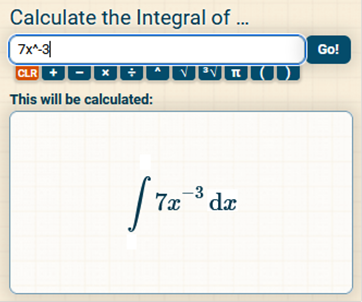
Find the integral 
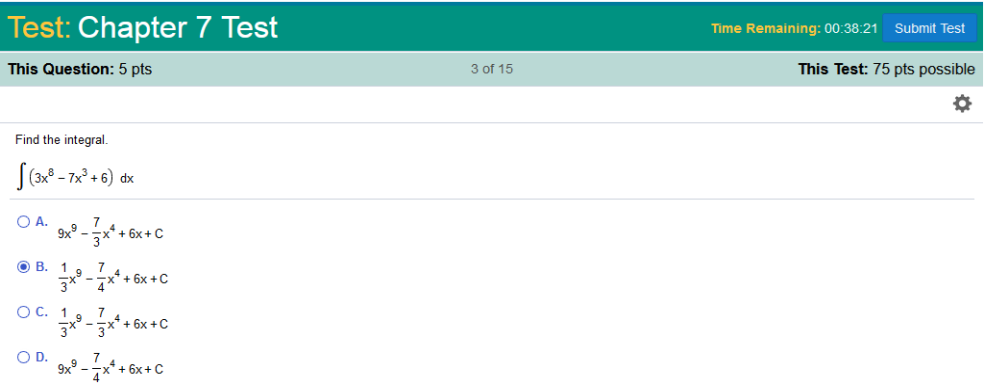
The long way. Note: if there is a constant (such as 6), we can move 6 outside the equation and solve for 1. Then we will multiply the constant by 1 and the solution for the variable. *The integral of 1 or -1 = (1)x or (1)-x First, we will solve we can place the 3 on top next, we will solve we can place the -7 on top next, we will solve we can multiply 6(1)x = 6x we can move all negatives and x values to the right of the fractions https://www.integral-calculator.com/ Enter the equation exactly like below. 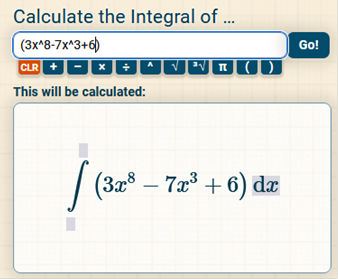
Find the integral 
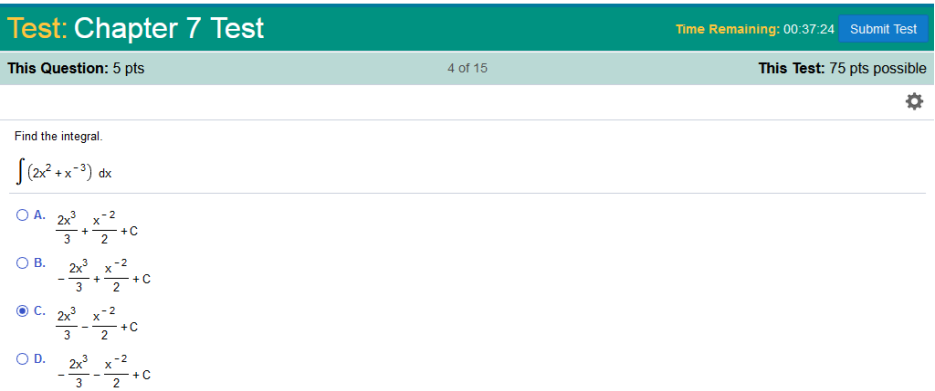 
2 is a constant, so we can move it in front of the equation n = the exponent.  = = So, we have Integrals of negative exponents are a little tricky. we will move the negative from -2 beside the fraction and finalize the answer. https://www.integral-calculator.com/ Enter the equation exactly like below. 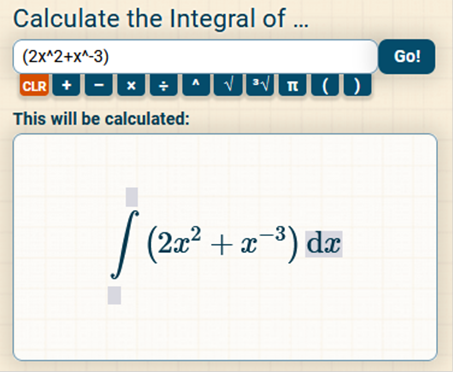 Find the integral 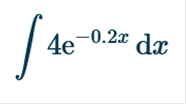
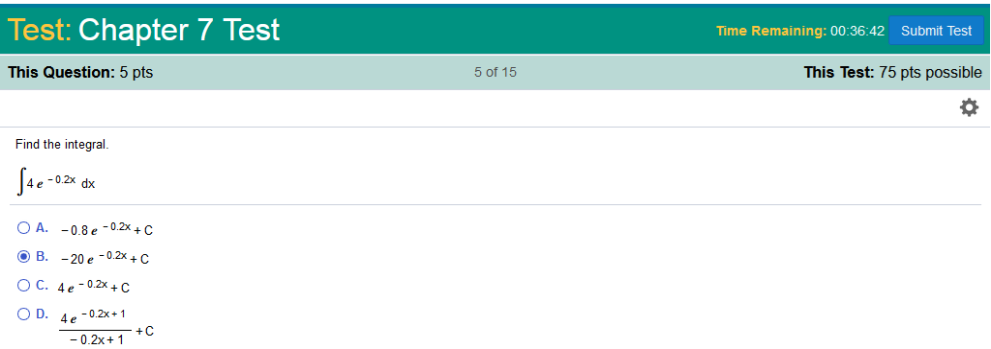
There is a long way to do this problem, however, all we need to do here is divide 4 by 0.2 and replace 4 with 20. 4 / 0.2 = 20 The integral of The same steps will work with 3 / 0.2 = 15 The integral of Find the integral 
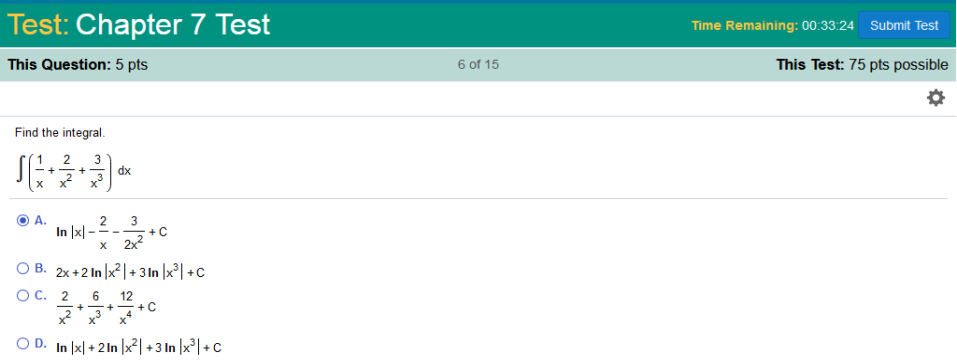
The long way. The integral of So, we have ln|x| Next, we will solve Since 2 is constant with respect to x, move 2 out of the integral, and we will move x2 to the numerator and it will be negative. Solve we can move x-1 down (it will be positive) and rewrite Solve We can move x-2 down (it will be positive) and rewrite Answer: ln|x| - https://www.integral-calculator.com/ Enter the equation exactly like below. 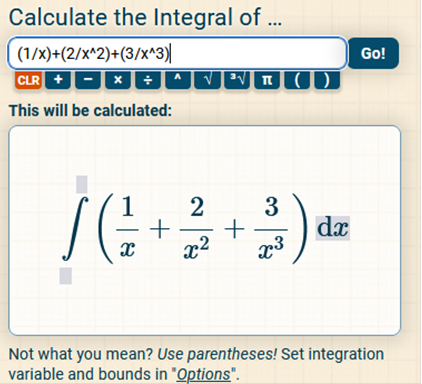
Find C(x) if C’(x) = √x and C (9) = 40 
First, we need to find the integral of: √x https://www.integral-calculator.com/ Enter (sqrt(x)) Now we plug in the value of 9 for x, add x, and solve for x like so. Plug in values 2(9)3/2 ÷ 3 + x = 40 Simplify 18 + x = 40 Subtract 18 x = 22 Since C’(x) = √x we must use the integral, add the value of C(x), and rewrite the equation like below. C(X) = Find the integral. 
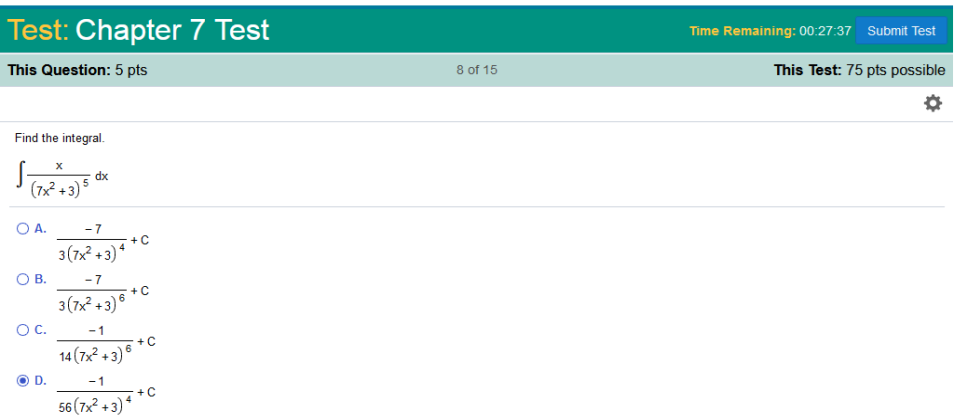
First, we need We now have (14x)5 so we will Rewrite the problem using u and du (in this case u = 7x2 + 3) This will be Since Next, we will move u5 to the numerator by raising it to the -1 power and end up with Next, we need to work on So, we have Lastly, we simplify and replace all occurrences of u with (remember u = 7x2 + 3) https://www.integral-calculator.com/ Enter the equation exactly like below. 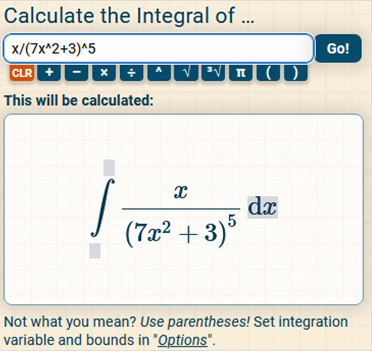

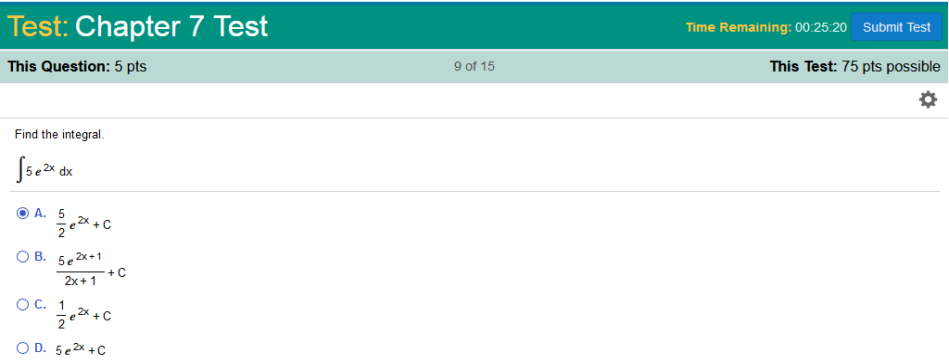
Simply divide the constant, 5, by 2 This would be true with No worries! https://www.integral-calculator.com/ Enter the equation exactly like below. 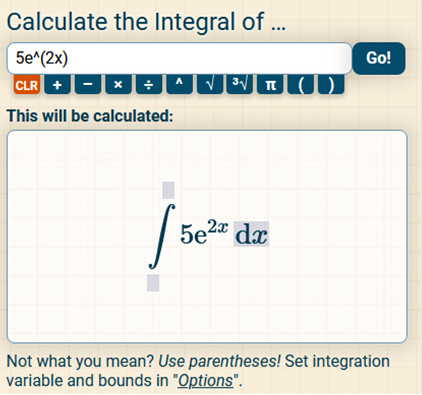
Approximate the area under the graph of f(x) and above the x-axis using n rectangles. f(x) = 2x3 – 1 from x = 1 to x = 6; n = 5; use right endpoints. 
We will use 2x3 -1 to solve this problem. Lower limit 1, upper limit 6, n = 5 So, we will add 1 + 6, and subtract 5 6 + 1 – 5 = 2 We will start at f(2) through f(6) f(2) = 2x3 -1 = 2(2)3 -1 = 15 f(3) = 2x3 -1 = 2(3)3 -1 = 53 f(4) = 2x3 -1 = 2(4)3 -1 = 127 f(5) = 2x3 -1 = 2(5)3 -1 = 249 f(6) = 2x3 -1 = 2(6)3 -1 = 431 15 + 53 + 127 + 249 + 431 = 875 https://www.emathhelp.net/calculators/calculus-2/riemann-sum-calculator/ enter equation and values, find right end points. 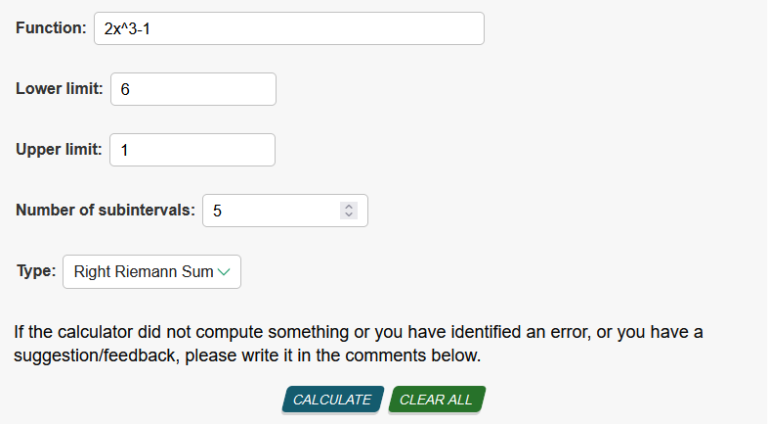 ` `
Evaluate the definite integral. 
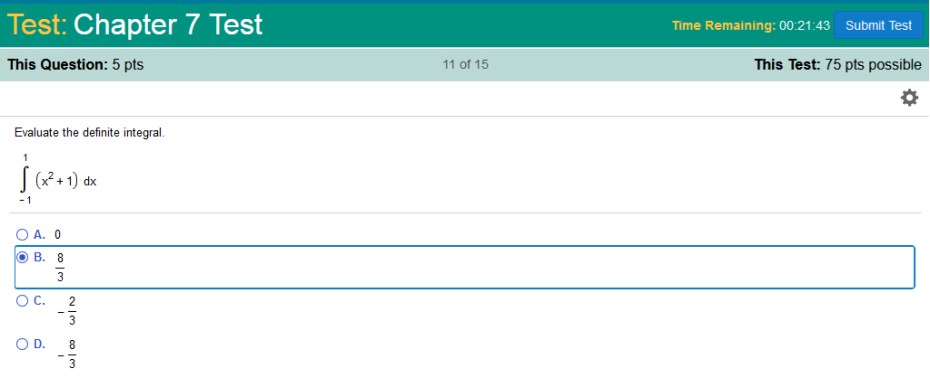
First, we Split the single integral into multiple integrals. We have ( https://www.integral-calculator.com/ Enter the equation exactly like below. 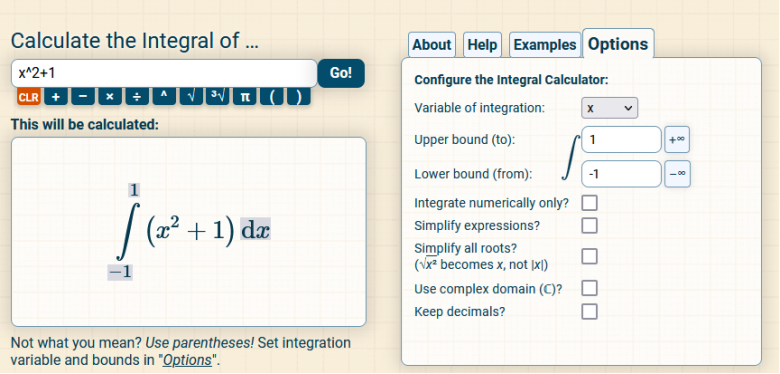
Evaluate the integral. 
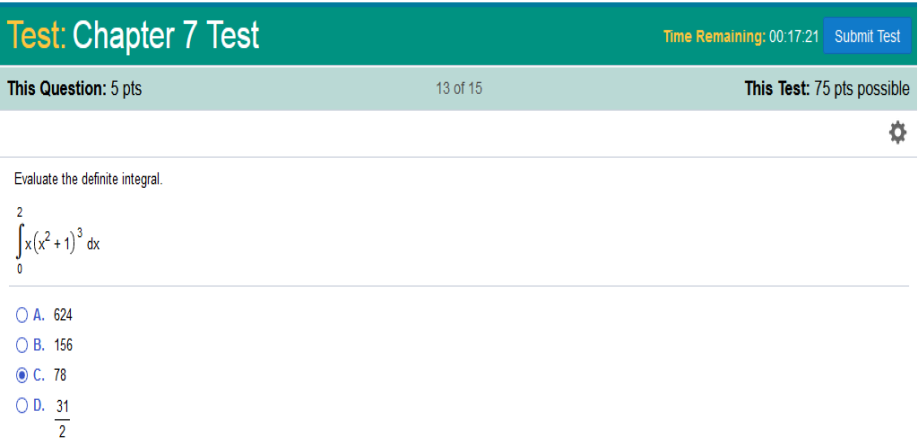
The easiest way to do this is to simplify x(x2 + 1)3 You should have some type of calculator that will do this for you. However, the easiest way to simplify is like so first (x2 + 1)3 x2(3) + 3x2(2) · 1 + 3x2 · 12 + 13 x6 + 3x4 · 1 + 3x2 · 12 + 13 x6 + 3x4 + 3x2 + 1 now we have x (x6 + 3x4 + 3x2 + 1) = x7 + 3x5 + 3x3 + x Now we need to find the integral of x7 + 3x5 + 3x3 + x We can do these one by one which makes it simple. We can do the first and simply follow the pattern. The integral We do not need to do the rest, because they are similar done the same way + + + So, we need to plug in the upper and lower limits, and subtract Upper limit = 2, lower limit = 0 https://www.integral-calculator.com/ Enter the equation exactly like below. 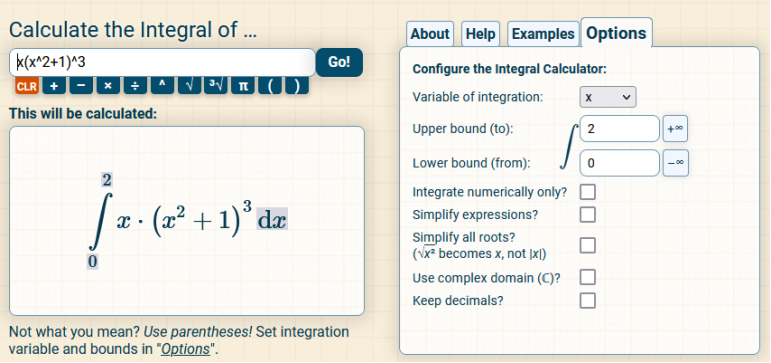
f(x) = 2x + 7, (1, 5) 
f(x) = 2x + 7, (1, 5) = + + So, we have x2 + 7x and now we plug in the upper and lower limits and subtract 5 1 (x2 + 7x) – (x2 + 7x) ((5)2 + 7(5)) – ((1)2 + 7(1)) 60 - 8 = 52 https://www.integral-calculator.com/ Enter the equation exactly like below. 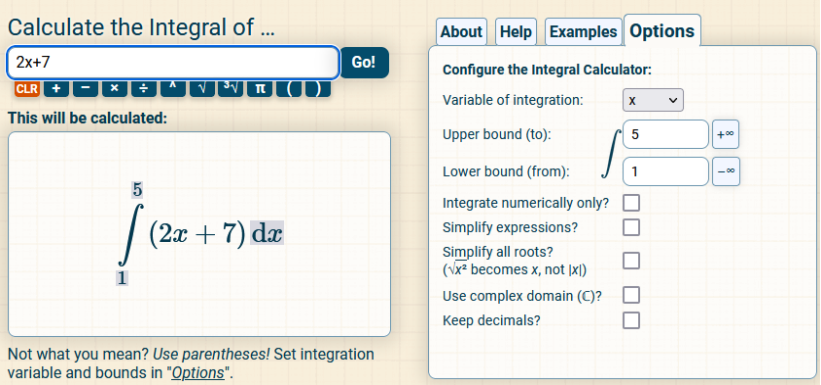
E’(x) = 6x + 4 where x is the number of days since the start of the job. Find the total expenditure if the job takes 3 days. 
We have the equation E’(x) = 6x + 4 and since we are looking the total expenditure for 3 days, the lower limit starts at 0, and the upper limit ends at 3. This will be in hundreds of dollars. That means we will multiply the solution by 100… 
So, we have 3x2 + 4x Now we plug the lower and upper limits in and subtract. 3 0 (3x2 + 4x) - (3x2 + 4x) (3(3)2 + 4(3)) - (3(0)2 + 4(0)) 39 - 0 = 39 39 in hundreds, so it is 39 ·100 = $3,900 https://www.integral-calculator.com/ Enter the equation exactly like below. 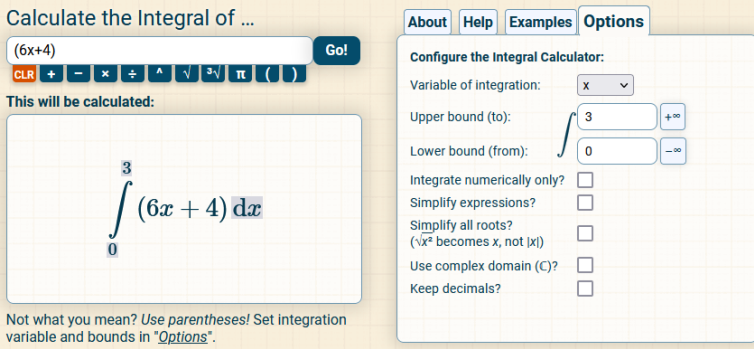
Homework Chapter 1A 1B 2A 2B 3A 3B 4A 4B 5A 6A Chapter Tests 1 2 3 4 5 6 7 FINAL EXAM | Need A Tutor? | Need Homework Help?
|
| Home |
Accounting & Finance | Business |
Computer Science | General Studies | Math | Sciences |
Civics Exam |
Everything
Else |
Help & Support |
Join/Cancel |
Contact Us |
Login / Log Out |